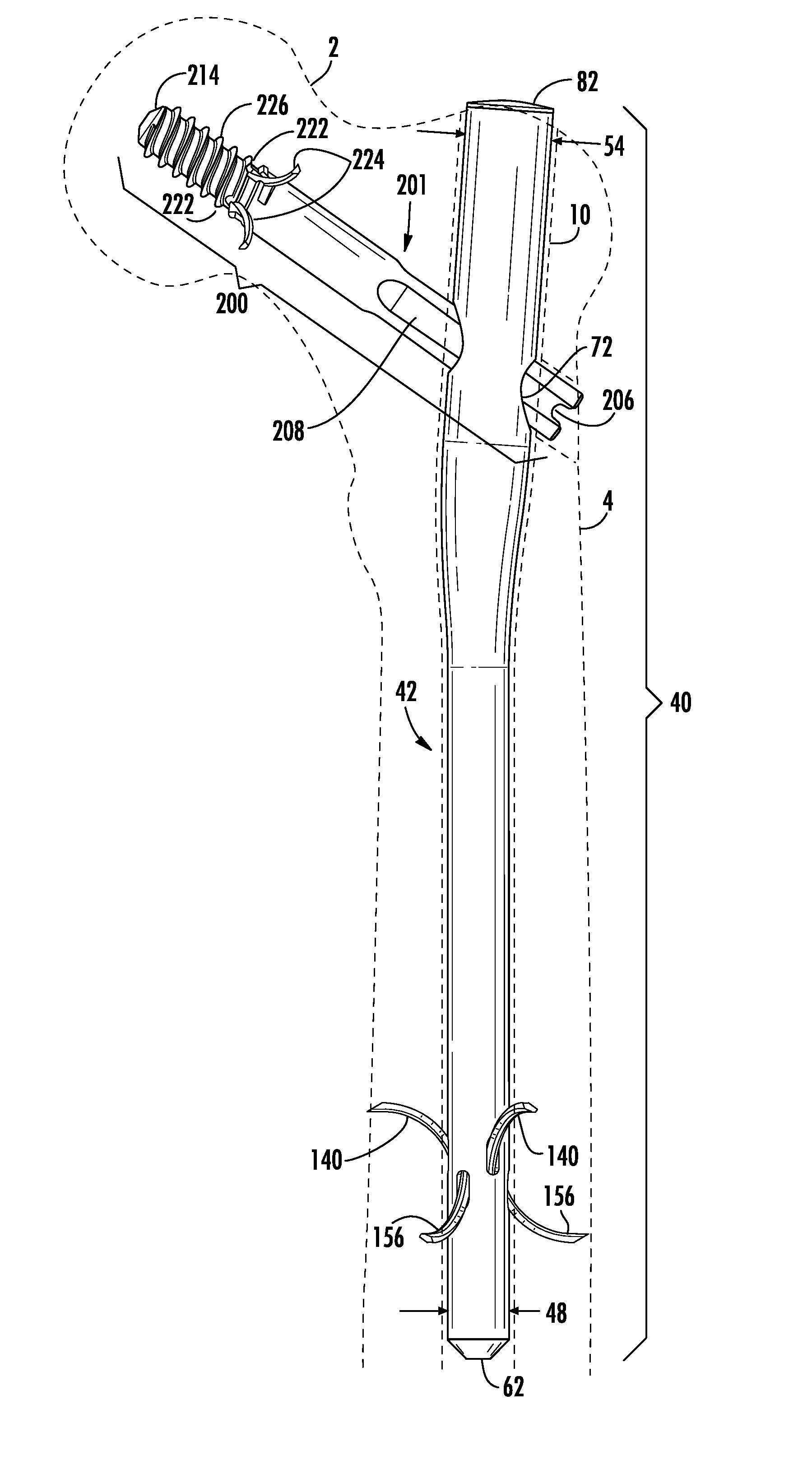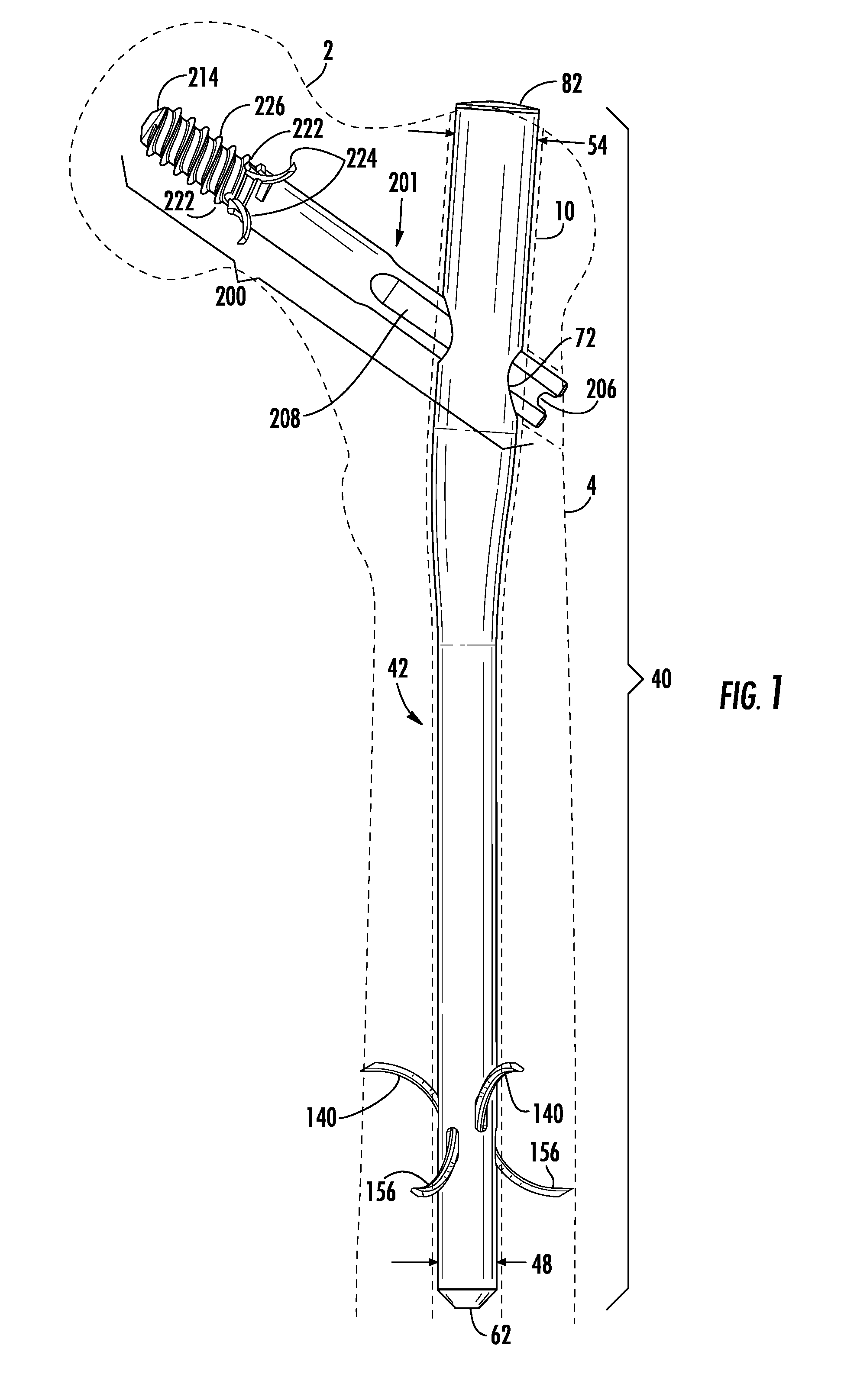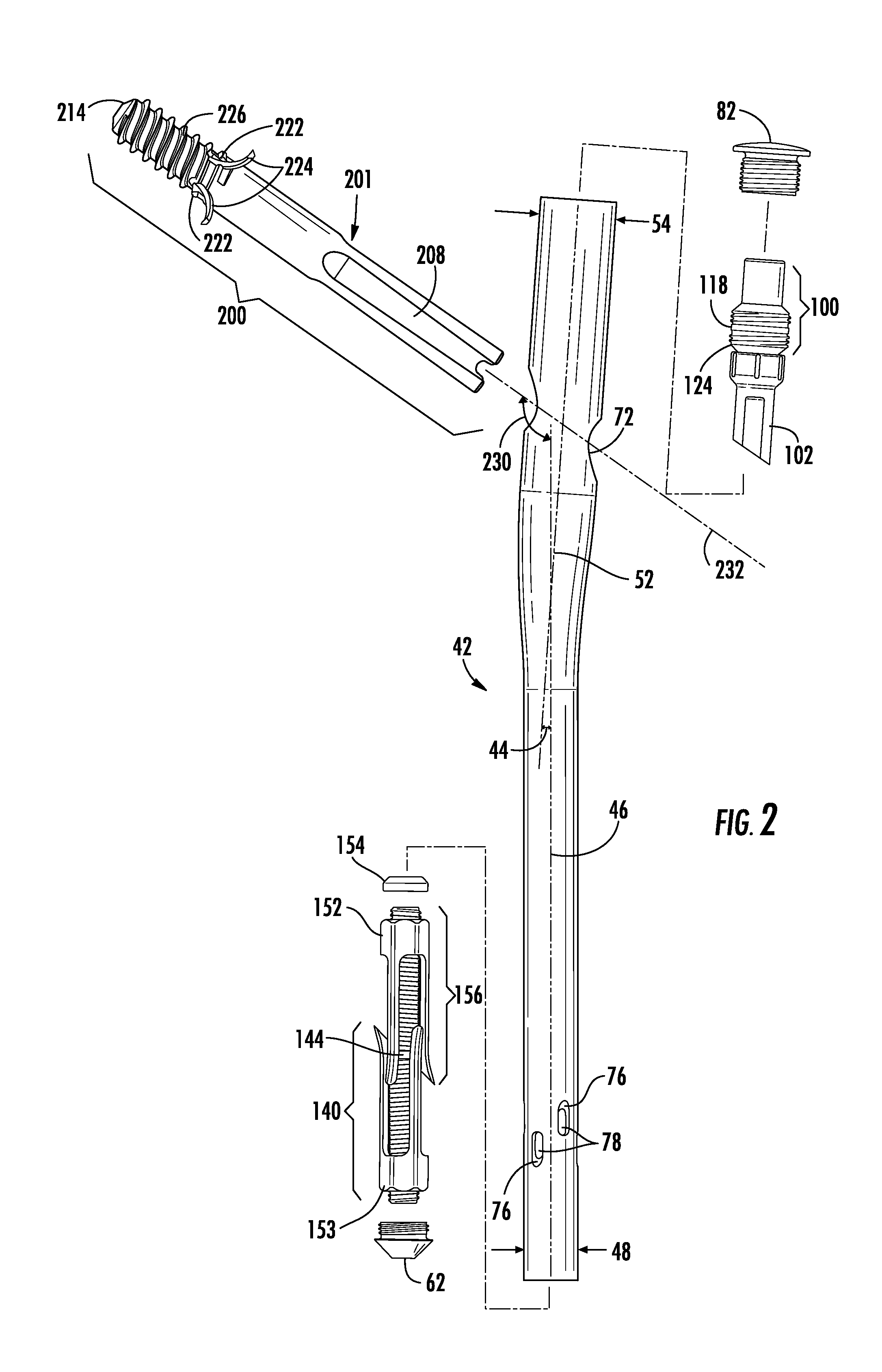Intramedullary nail system including tang-deployment screw with male interface
a technology of intramedullary nail and interface, which is applied in the field of intramedullary nail system, can solve the problems of affecting the patient's x-ray radiation, irritating surrounding tissue, and additional time required under x-ray radiation exposure, and achieve the effect of preventing rotation
- Summary
- Abstract
- Description
- Claims
- Application Information
AI Technical Summary
Benefits of technology
Problems solved by technology
Method used
Image
Examples
Embodiment Construction
[0063]Reference will now be made in detail to the presently preferred embodiments of the invention, examples of which are illustrated in the accompanying drawings. Throughout the following detailed description, the same reference numerals refer to the same elements in all figures.
[0064]The individual components of the assembly, as illustrated, are constructed of implantable grade titanium, but it is anticipated that any suitable material be used, such as implantable grade stainless-steel alloys or polymeric materials such as nylon, carbon fibers, and thermoplastics.
[0065]The Intramedullary Nail System including Tang-deployment Screw with Male Interface disclosed is especially suited for use fixing / stabilizing stable and unstable fractures of the upper portion of the femur. Exemplary, but not exclusive, examples of such fractures include intertrochanteric fractures, pertrochanteric fractures, high subtrochanteric fractures, low subtrochanteric fractures, and combinations thereof.
[006...
PUM
 Login to View More
Login to View More Abstract
Description
Claims
Application Information
 Login to View More
Login to View More - R&D
- Intellectual Property
- Life Sciences
- Materials
- Tech Scout
- Unparalleled Data Quality
- Higher Quality Content
- 60% Fewer Hallucinations
Browse by: Latest US Patents, China's latest patents, Technical Efficacy Thesaurus, Application Domain, Technology Topic, Popular Technical Reports.
© 2025 PatSnap. All rights reserved.Legal|Privacy policy|Modern Slavery Act Transparency Statement|Sitemap|About US| Contact US: help@patsnap.com



